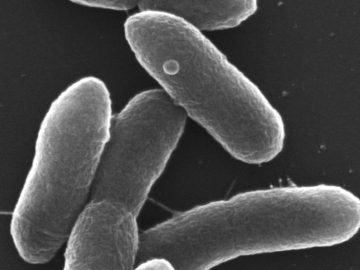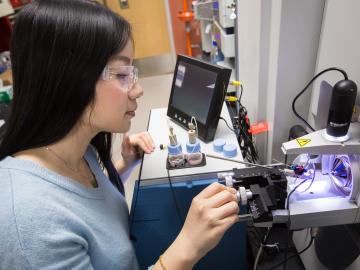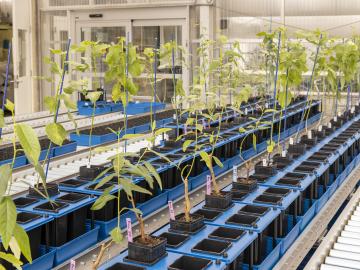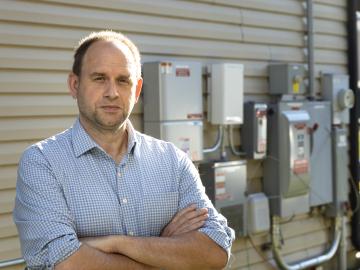
Filter News
Area of Research
- (-) Energy Science (69)
- Advanced Manufacturing (4)
- Biological Systems (2)
- Biology and Environment (72)
- Computational Biology (1)
- Computational Engineering (2)
- Computer Science (4)
- Fusion and Fission (4)
- Isotopes (1)
- Materials (50)
- Materials for Computing (9)
- Mathematics (1)
- National Security (19)
- Neutron Science (22)
- Nuclear Science and Technology (6)
- Quantum information Science (2)
- Sensors and Controls (1)
- Supercomputing (51)
News Topics
- (-) Big Data (5)
- (-) Bioenergy (26)
- (-) Composites (17)
- (-) Coronavirus (12)
- (-) Mathematics (2)
- (-) Microscopy (8)
- (-) Molten Salt (1)
- (-) Security (6)
- 3-D Printing/Advanced Manufacturing (79)
- Advanced Reactors (6)
- Artificial Intelligence (8)
- Biology (11)
- Biomedical (6)
- Biotechnology (4)
- Buildings (38)
- Chemical Sciences (14)
- Clean Water (8)
- Computer Science (25)
- Critical Materials (9)
- Cybersecurity (8)
- Energy Storage (71)
- Environment (54)
- Exascale Computing (2)
- Fossil Energy (2)
- Frontier (2)
- Fusion (1)
- Grid (39)
- High-Performance Computing (6)
- Hydropower (3)
- Isotopes (1)
- Machine Learning (7)
- Materials (35)
- Materials Science (26)
- Mercury (3)
- Microelectronics (1)
- Nanotechnology (8)
- National Security (5)
- Neutron Science (11)
- Nuclear Energy (7)
- Partnerships (12)
- Physics (1)
- Polymers (11)
- Quantum Science (2)
- Simulation (4)
- Space Exploration (3)
- Statistics (1)
- Summit (4)
- Transportation (66)
Media Contacts

Prometheus Fuels has licensed an ethanol-to-jet-fuel conversion process developed by researchers at Oak Ridge National Laboratory. The ORNL technology will enable cost-competitive production of jet fuel and co-production of butadiene for use in renewable polymer synthesis.

ORNL scientists have modified a single microbe to simultaneously digest five of the most abundant components of lignocellulosic biomass, a big step forward in the development of a cost-effective biochemical conversion process to turn plants into

Scientists at Oak Ridge National Laboratory and Ohio State University discovered a new microbial pathway that produces ethylene, providing a potential avenue for biomanufacturing a common component of plastics, adhesives, coolants and other

Scientists at the Department of Energy’s Oak Ridge National Laboratory have a powerful new tool in the quest to produce better plants for biofuels, bioproducts and agriculture.

Oak Ridge National Laboratory researchers have developed a machine learning model that could help predict the impact pandemics such as COVID-19 have on fuel demand in the United States.

Joe Hagerman, ORNL research lead for buildings integration and controls, understands the impact building technology innovations can have during times of crisis. Over a decade ago, he found himself in the middle of one of the most devastating natural disasters of the century, Hurricane Katrina.

Five researchers at the Department of Energy’s Oak Ridge National Laboratory have been named ORNL Corporate Fellows in recognition of significant career accomplishments and continued leadership in their scientific fields.

Scientists at ORNL used neutron scattering and supercomputing to better understand how an organic solvent and water work together to break down plant biomass, creating a pathway to significantly improve the production of renewable

Oak Ridge National Laboratory researchers have built a novel microscope that provides a “chemical lens” for viewing biological systems including cell membranes and biofilms.

Ada Sedova’s journey to Oak Ridge National Laboratory has taken her on the path from pre-med studies in college to an accelerated graduate career in mathematics and biophysics and now to the intersection of computational science and biology


